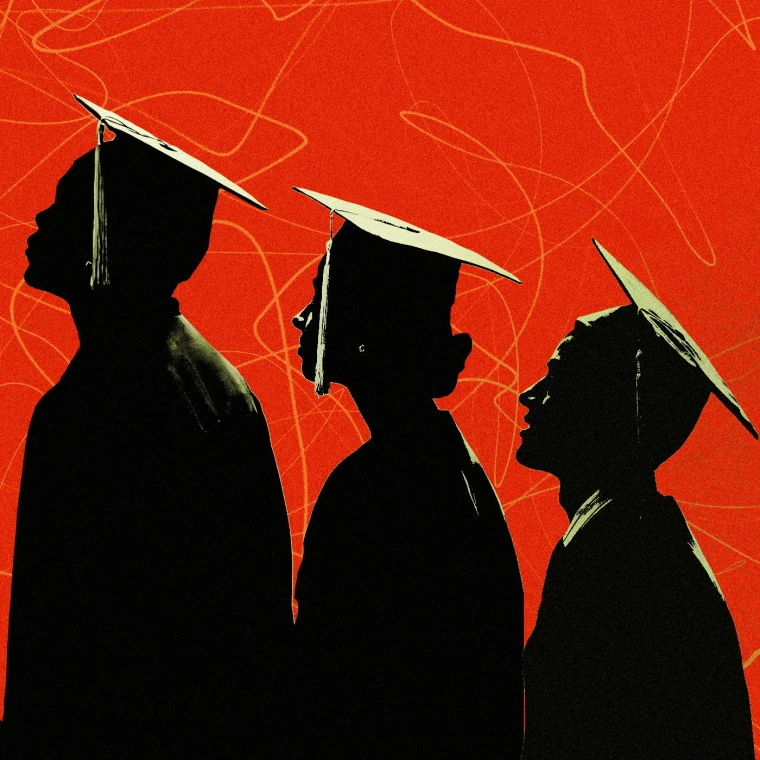SCOTUS Ruling May Require Walking Tightrope
‘Affirmative Action’ or ‘Preferences’?
Jason Murray Named Washington Post Sports Editor
Rivera Quits Fox after ‘Firing’ From ‘The Five’
Wesley Lowery Joins American U. Faculty
Homepage photo credit: Leila Regime/NBC News
Support Journal-ismsDonations are tax-deductible.
- New! Facebook fundraiser
A CNBC story last year said, “By many standards, Michael Wang, 25, was the perfect student in high school. Wang graduated in the top 0.5 percent of his class with a 4.67 weighted GPA, near-perfect test scores and countless extracurriculars. When all of this resulted in rejections from his first choice-schools, he wondered what more he could’ve done, and then another thought crossed his mind — had he been rejected because he was Asian American?” (Credit: YouTube)
SCOTUS Ruling May Require Walking Tightrope
The Radio Television Digital News Association and major universities with journalism programs vowed to continue to seek diversity Thursday in the wake of a U.S. Supreme Court decision striking down affirmative action in college admissions.
However, two major journalism groups — the News Leaders Association, representing editors, and the Association for Education in Journalism and Mass Communication, representing journalism educators — did not weigh in.
The News Leaders Association did not respond to an inquiry, and AEJMC President Deb Aikat messaged, “We do not have an official reaction we can share with you.
“Our AEJMC leadership will need time to thoroughly review the details of the U.S. Supreme Court ruling in Students for Fair Admissions Inc. v. University of North Carolina, et. al., and its potential impact before determining specifically how journalism educators will comply with this decision. In the coming weeks, we will communicate our plans with our AEJMC membership.”
The national journalist-of-color organizations were similarly silent.
However, Dan Shelley, CEO and chairman of RTDNA, messaged, “RTDNA is deeply concerned that the Supreme Court ruling could make it more difficult for newsrooms across the country to employ journalists of color who’ve been educated in the nation’s top journalism programs. Broadcast and digital news outlets remain committed to staffing their local markets with journalists who truly reflect the communities they serve. The ruling could make that more challenging but will not dissuade the industry from doing everything it can to fulfill its duty.”
Institutions such as the University of California at Berkeley, which has a major journalism school, reacted quickly. In short order, Berkeley staff members posted reactions from seven faculty and administrators on its website.
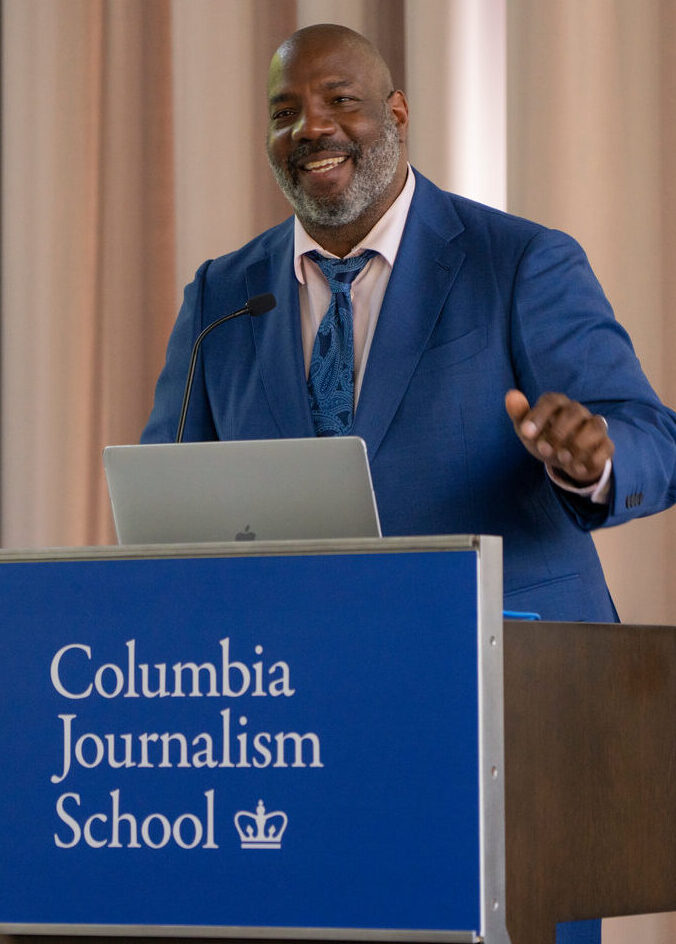 At Columbia Journalism School, Dean Jelani Cobb (pictured) issued a brief statement — “We remain committed to this pursuit in every way legally possible” — that followed an official one from the university expressing determination: “Diversity is a positive force across every dimension of Columbia, and we can and must find a durable and meaningful path to preserve it.”
At Columbia Journalism School, Dean Jelani Cobb (pictured) issued a brief statement — “We remain committed to this pursuit in every way legally possible” — that followed an official one from the university expressing determination: “Diversity is a positive force across every dimension of Columbia, and we can and must find a durable and meaningful path to preserve it.”
Cobb wrote a longer piece for the New Yorker in his role as a staff writer there. ” ‘How long?’ was always the wrong question,” Cobb said, addressing impatient critics. “It presupposed that there was a standard speed at which groups whose disadvantages were the product of centuries of social engineering were meant to recover and achieve. The salient metric was progress, not time.”
As Adam Liptak reported for The New York Times, “Race-conscious admissions programs at Harvard and the University of North Carolina are unconstitutional, the Supreme Court ruled on Thursday, the latest decision by its conservative supermajority upending decades of jurisprudence on a contentious issue of American life.
“Chief Justice John G. Roberts Jr., writing for the 6-3 majority, said the two programs ‘unavoidably employ race in a negative manner’ and ‘involve racial stereotyping,’ in violation of the Constitution,” namely, a 14th Amendment that, Justice Ketanji Brown Jackson had reminded her colleagues, was designed to aid newly freed Black people.
“Universities can consider how race has affected a student’s life — a topic they may write about in an application essay, for example — but he warned schools not to use such considerations as a surreptitious means of racial selection. ‘Universities may not simply establish through the application essays or other means the regime we hold unlawful today,’ he wrote. . . .”
Specifically at issue, as Michelle N. Amponsah and Emma H. Haidar wrote for the Harvard Crimson, were cases from Harvard University and the University of North Carolina. The conservative court declared Harvard’s race-conscious admissions policy unconstitutional.
“The 6-2 decision — widely expected by legal scholars due to the Court’s strong conservative majority — marks a major setback for Harvard, which has faced scrutiny for its admissions practices since anti-affirmative action group Students for Fair Admissions first filed suit in 2014.
“The suit alleged the College’s admissions processes discriminate against Asian Americans in violation of the Civil Rights Act of 1964, which bans institutions that receive federal funds from discriminating ‘on the grounds of race, color, or national origin.’
“The Supreme Court also ruled against the University of North Carolina and its admissions policies in a 6-3 decision. Justices heard the suits, both brought by Students for Fair Admissions, on the same day last October.”
The Crimson promised it “will break down what this ruling means for the admissions process, undergraduates, and higher education in a special print edition Friday, which will also be published online.”
 The University of Maryland administration was one of the first to react to the ruling, as was its outgoing journalism school dean, Lucy Dalglish (pictured).
The University of Maryland administration was one of the first to react to the ruling, as was its outgoing journalism school dean, Lucy Dalglish (pictured).
“We will comply with the law, while recognizing that the future of democracy depends on people from diverse communities having access to information,” Dalglish said. “Citizens need to make informed decisions about every issue in American society, and the best way to ensure they receive accurate, timely information is by training young people from a variety of communities to become the storytellers of the future. . . .”
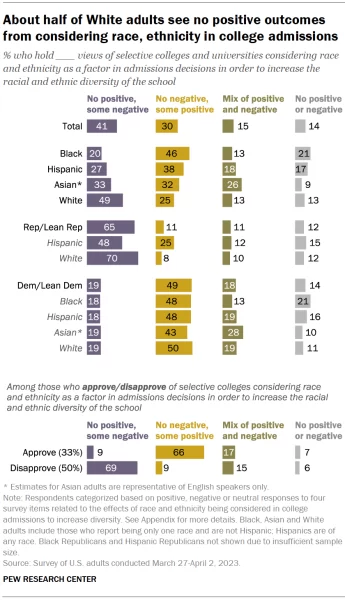
“We will do everything we can to implement recruiting strategies and practices to ensure we have the most diverse classes possible.”
President Biden has promised to help. In a televised address, Biden outlined a rationale in synch with news managers who say they want to report accurately on all segments of their communities:
“The statistics — one statistic: Students from the top 1 percent of family incomes in America are 77 times more likely to get into an elite college than one from the bottom 20 percent of family incomes. . . .” Biden said.
“Today, for too many schools, the only people who benefit from the system are the wealthy and the well-connected. The odds have been stacked against working people for much too long.”
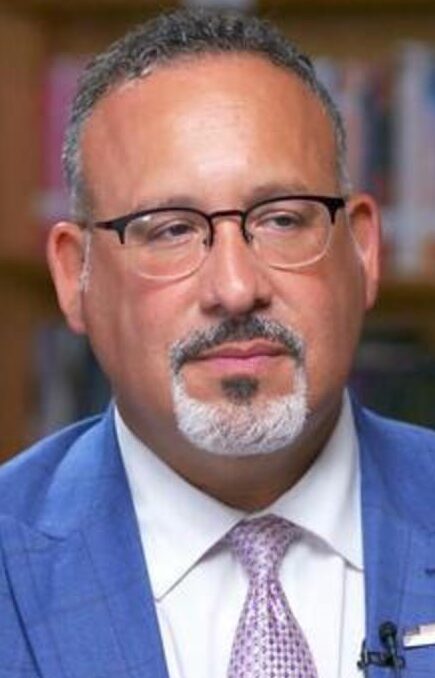 In a video call with reporters, Secretary of Education Miguel Cardona (pictured) stressed these White House talking points:
In a video call with reporters, Secretary of Education Miguel Cardona (pictured) stressed these White House talking points:
“The Biden-Harris Administration is also taking action to support colleges and universities so they can continue building pathways to upward mobility and success for all students to thrive in the American workforce and our Nation’s military, including:
“Providing colleges and universities with clarity on what admissions practices and additional programs to support students remain lawful, within the next 45 days as colleges prepare for the next application cycle;
“Convening a National Summit on Educational Opportunity;
“Releasing a report on strategies for increasing diversity and educational opportunity, including meaningful consideration of adversity;
“Increasing transparency in college admissions and enrollment practices; and
“Supporting states in analyzing data to increase access to educational opportunity for underserved communities.
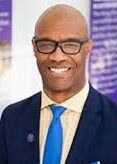 At Medill School of Journalism, Media and Integrated Marketing Communications at Northwestern University, Dean Charles Whitaker (pictured), a Black journalist, began a statement with his history of advocacy for diversity. Then he added, “We want to assure our stakeholders that while we will respect the law, we remain steadfast in our commitment to making our classrooms and, by extension, our industries, places that better reflect the demography of our country.”
At Medill School of Journalism, Media and Integrated Marketing Communications at Northwestern University, Dean Charles Whitaker (pictured), a Black journalist, began a statement with his history of advocacy for diversity. Then he added, “We want to assure our stakeholders that while we will respect the law, we remain steadfast in our commitment to making our classrooms and, by extension, our industries, places that better reflect the demography of our country.”
At the University of Missouri, also home of a top-ranked school of journalism, an official statement noted existing constraints. “The Missouri Attorney General has instructed universities to ‘immediately cease their practice of using race-based standards to make decisions about things like admission, scholarships, programs and employment,‘ ” it said.
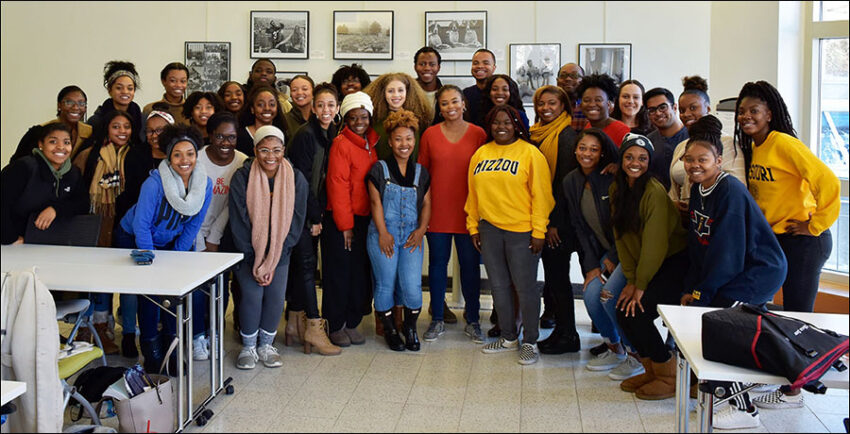
“Contributions from individuals with diverse backgrounds, experiences and perspectives promote intellectual pluralism and enable us to achieve the excellence that we seek in learning, research and engagement. This makes our university a better place to work, learn and innovate.
“As allowed by prior law, a small number of our programs and scholarships have used race/ethnicity as a factor for admissions and scholarships. Those practices will be discontinued, and we will abide by the new Supreme Court ruling concerning legal standards that applies to race-based admissions and race-based scholarships.”
Top officials at Syracuse University, which houses the S.I. Newhouse School of Public Communications, signed a statement saying, “Today’s decision is disappointing; however, in no way does it change Syracuse University’s longstanding and demonstrated commitment to being a university that is inclusive and welcoming to all.“
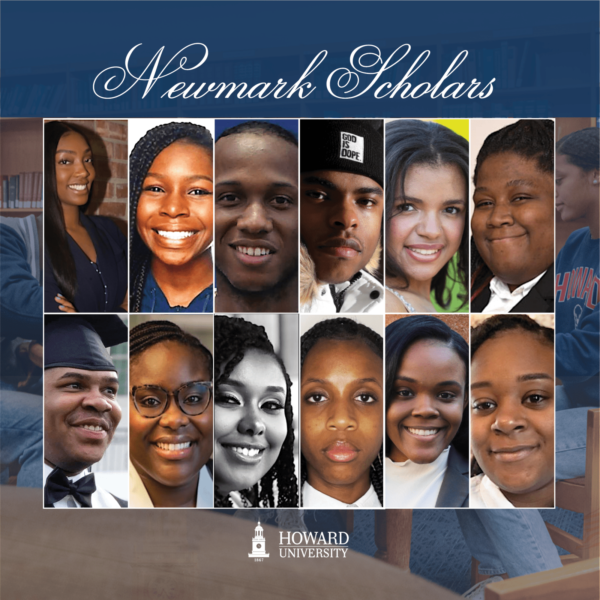
As might be expected, historically Black Howard University, home to the Cathy Hughes School of Communications, used more forceful language.
“The decision will not only have a devastating impact on the diversity of colleges and universities across the country, but will also decrease access to higher education for students of color everywhere. Education is still a top driver of economic success for all Americans, and this decision will have far-reaching ramifications for those seeking equity in the college admissions process and beyond.
“At our core, Howard University is committed to developing scholars and professionals who drive change. At a time when we need it most, it is disheartening to know that this ruling will hinder certain students from gaining admission to institutions of higher learning and receiving a quality education that can prepare them to be change agents and contributing members of our society.
“We will continue to partner with those institutions and organizations that understand the critical role affirmative action has played in ensuring equitable access to education for students of color and will closely monitor how today’s decision will impact higher education trends in the short and long term. We will also encourage others to join us in advocating for policies and legislation that safeguard a stronger future by increasing, not decreasing, educational opportunities for all.”
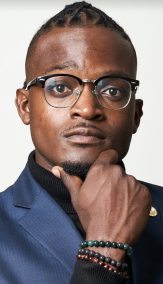 Still, that language was tame compared with some outside the academy. Wisdom Cole (pictured), NAACP national director of youth and college, planned to lead a group of students and activists in a mobilization starting at the Supreme Court steps.
Still, that language was tame compared with some outside the academy. Wisdom Cole (pictured), NAACP national director of youth and college, planned to lead a group of students and activists in a mobilization starting at the Supreme Court steps.
Cole said, “This is a dark day in America. Affirmative action has been a beacon of hope for generations of Black students. It stood as a powerful force against the insidious poison of racism and sexism, aiming to level the playing field and provide a fair shot at a high-quality education for all. Students across the country are wide awake to the clear and present danger encroaching on their classrooms. We will continue to fight, organize, mobilize and vote against all attempts to hold us back. We will hold the line against this clear pattern of hate. We will thrive!”
Biden sought to puncture misconceptions about affirmative action, and so did the Los Angeles Times.
“Many people wrongly believe that affirmative action allows unqualified students — unqualified students — to be admitted ahead of qualified students,” the president said. “This is not — this is not how college admissions work.
“Rather, colleges set out standards for admission, and every student — every student has to meet those standards. . . .”
Teresa Watanabe and Howard Blume wrote a Los Angeles Times story headlined, “A lot of what you’ve heard about affirmative action is wrong.”
For the Journalists’ Resource, Denise-Marie Ordway updated a piece with the subheadline, “How can colleges maintain or improve student diversity now that the Supreme Court has ruled it unlawful to admit students based partly on race and ethnicity? We look at research on the effectiveness of race-neutral alternatives.”
Ordway wrote, “Several alternate strategies have shown promise, although researchers estimate their impacts are relatively small. Academic studies have found none are as effective as race-based affirmative action, Zachary Bleemer, an assistant professor of economics at Yale University who studies college admission policies, told The Journalist’s Resource.
“ ‘States that have seen affirmative action bans do not offer a silver bullet for universities seeking to maintain racial diversity without race-based affirmative action,’ Bleemer wrote in an email.”
Ordway continued, “The University of Michigan, a top-ranked public university, introduced a wide range of programs to replace affirmative action. Attorneys for the school argue race-neutral strategies have been expensive, time consuming and labor intensive.”
After the law took effect in December 2006, the University of Michigan “was forced to radically alter its admissions process in order to even approach the diversity levels achieved prior to Proposal 2,” the state constitutional amendment that prohibits all public institutions and agencies from discriminating against or giving preferential treatment to anyone based on race, gender, ethnicity and other factors.
The attorneys wrote that in a 36-page amicus brief filed with the Supreme Court late last year in support of Harvard and UNC-Chapel Hill.
“ ‘That change was so disruptive that the response not only took time — over 15 years and counting — but vast resources and efforts extending far beyond University campuses, as U-M developed extensive new race-neutral initiatives that reached into school districts around the state,’ the attorneys write.”
Ordway also said, “The University of California system has adopted various race-neutral policies since voters there approved Proposition 209, a state constitutional amendment similar to Michigan’s, in 1996. That ban began with the freshman class of fall 1998.
“The state’s most selective public universities — the University of California, Berkeley and University of California, Los Angeles — lost the most ground. Prior to the ban, 6.32% of freshmen at UC Berkeley were Black. In 2019, that figure dropped to 2.76%. The proportion of Native American freshman fell from 1.82% to 0.37%.
“Hispanic enrollment, however, has grown across California’s public universities. But the state also has seen its Hispanic population swell in recent decades. This academic year, 56% of all children attending public elementary, middle and high schools there are Hispanic. . . .”
- Char Adams, Kimmy Yam, Sandra Lilley, Emi Tuyetnhi Tran and Cora Cervantes,, NBC: First college class after affirmative action ruling struggling with feeling their identity doesn’t matter
- Collin Binkley and Emily Swanson, Associated Press: Most in US say race should be considered, play small role in college admissions: AP-NORC poll (May 30)
- Donna Brazile, the Grio: Supreme Court affirmative action decision hurts Black students. Here’s how colleges should respond.
- Anna Chen, DC News Now: Universities, colleges respond to Supreme Court affirmative action decision
- Dorothy Butler Gilliam and Richard Prince, National Association of Black Journalists; and Zita Arocha, National Association of Hispanic Journalists, C-SPAN: Discussing affirmative action media coverage and discouraging use of the term “racial preferences.” (video) (Aug. 2, 1995)
- Emil Guillermo, Asian American Legal Defense and Education Fund: Whatever happens, the SCOTUS opinion on the Harvard affirmative action case won’t be the last word (June 9)
- Janet Gilmore, UC Berkeley: Affirmative action: What can other schools learn from UC Berkeley’s experience?
- Jeannie Suk Gersen, New Yorker: After Affirmative Action Ends
- Elie Mystal, The Nation: The Supreme Court Has Killed Affirmative Action. Mediocre Whites Can Rest Easier.
- Pew Research Center: More Americans Disapprove Than Approve of Colleges Considering Race, Ethnicity in Admissions Decisions
- Amber Phillips with Caroline Anders, Washington Post: The Five-Minute Fix
- Vincent D. Rougeau, Boston Globe: Clarence Thomas was a beneficiary of race-based admissions at my school (May 29)
- Michelle Singletary, Washington Post: Yes, I was hired because I was Black. But that’s not the only reason. (Sept. 18, 2020)
- Luke Taylor, News-Gazette, Champaign, Ill.: UI, other officials pan Supreme Court’s ruling on race-based admissions policies (quotes Leon Dash)
- Touré, the Grio: Right-wing media turns Asian student into another pawn in efforts to end affirmative action (June 13)
- Katy Tur, MSNBC: Department of Education Secretary @SecCardona breaks down what his department will do in the wake of SCOTUS’s affirmative action decision. (Twitter)
- Meena Venkataramanan, Washington Post: The fight for Asian American studies in colleges gains ground
- Ira Wilder, Ethan E. Horton and Eliza Benbow, Daily Tar Heel, University of North Carolina – Chapel Hill: Affirmative action unconstitutional, SCOTUS rules
Ed O’Keefe of CBS News reports Thursday on Michelle Obama’s statement on affirmative action. “Of course, students on my campus and countless others across the country were — and continue to be — granted special consideration for admissions,” she said. “Some have parents who graduated from the same school. Others have families who can afford coaches to help them run faster or hit a ball harder. Others go to high schools with lavish resources for tutors and extensive standardized test prep that help them score higher on college entrance exams. We don’t usually question if those students belong. . . .” (Credit: YouTube)
‘Affirmative Action’ or ‘Preferences’?
In 1995, the National Assocation of Black Journalists urged the media not to conflate the terms “affirmative action” and “racial preferences,” the term preferred by opponents of affirmative action.
“Sometimes ‘racial preferences’ is accompanied by the term ‘preferential treatment,” NABJ said.
From a report by the NABJ’s Media Monitoring Committee, later adopted by the NABJ board of directors and the subject of a news conference (video):
“These terms are pejorative and not synonymous with ‘affirmative action,’ defined by the U.S. Commission on Civil Rights as ‘a contemporary term the encompasses any measure, beyond simple termination of a discriminatory practices, that permits the consideration of race, national origin, sex or disability, along with other criteria, and which is adopted to provide opportunities to a class of qualified individuals who have either historically or actually been denied those opportunities and/or to prevent the recurrence of discrimination in the future.’
“Since polls have shown that the public supports affirmative action, but opposes ‘preferential treatment,’ the comingling of these terms, under the guide of objective reporting, unfairly characterizes affirmative action, the committee said.
“It also betrays a fundamental misunderstanding of the reason behind affirmative action: that it is intended to counter the built-in, systemic ‘preferences’ for white males that still exist, the committee said. In effect, race-based remedies are intended to counter preferences.”
Former first lady Michelle Obama made a similar point Thursday in a join statement with former president Barack Obama. “So often, we just accept that money, power, and privilege are perfectly justifiable forms of affirmative action, while kids growing up like I did are expected to compete when the ground is anything but level,” she said.
The NABJ Media Monitoring Committee then was co-chaired by Richard Prince and Greg Moore.
- Too Fab: Barack & Michelle Obama Speak Out After Supreme Court Ends Affirmative Action In College Admissions
Murray Named Washington Post Sports Editor
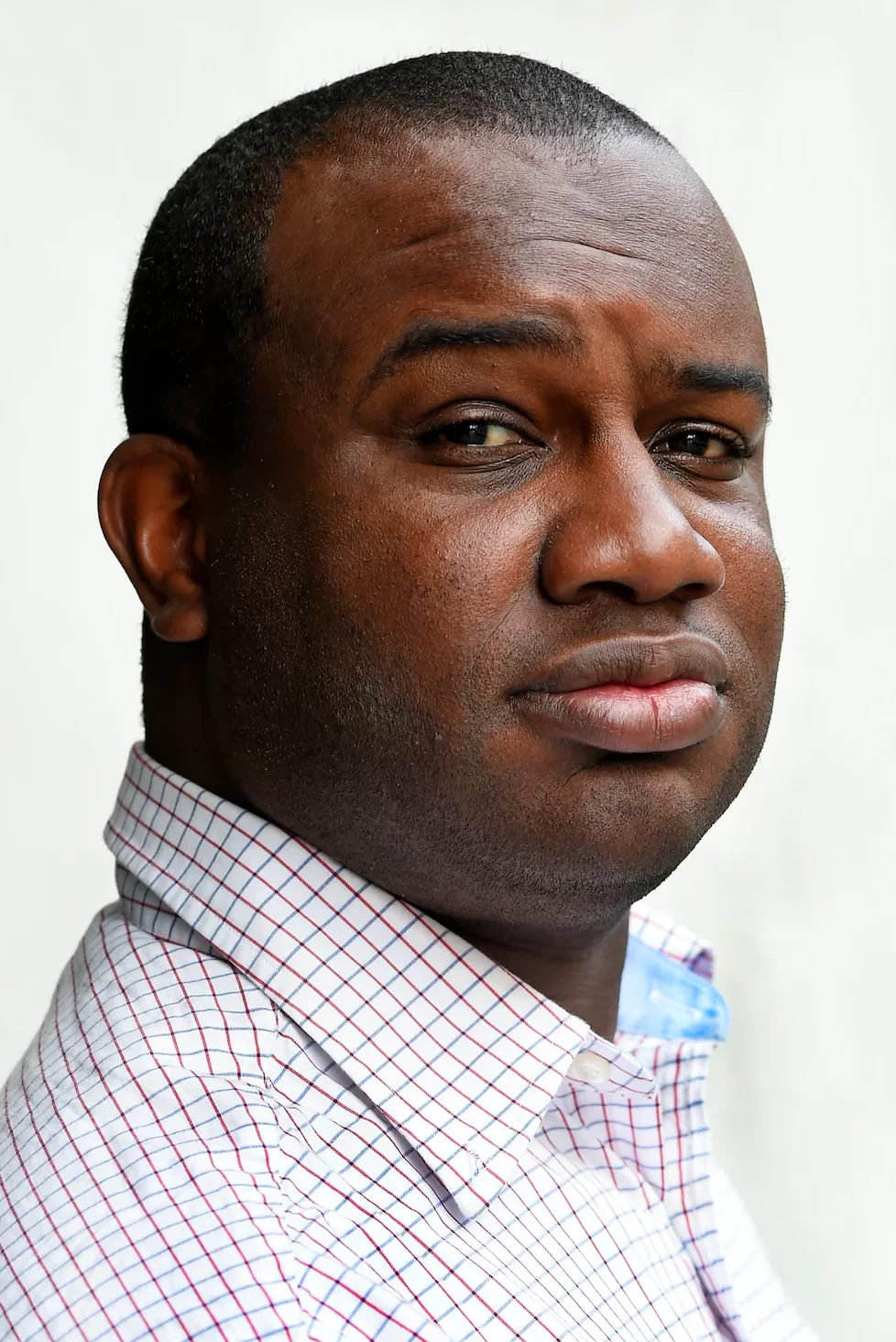 Jason Murray (pictured) who for three years was an assignment editor in the Washington Post Sports Department, was named the Post’s next Sports editor, its first Black journalist in the top role.
Jason Murray (pictured) who for three years was an assignment editor in the Washington Post Sports Department, was named the Post’s next Sports editor, its first Black journalist in the top role.
Murray joins a handful of African Americans leading newspaper sports departments, and is the one leading the largest staff. Randy Archibold, who had been sports editor at The New York Times, transferred to the news department in March to become senior editor for news.
Executive Editor Sally Buzbee wrote in a memo, “Jason has earned the wide respect and affection of his reporters and peers. In his guidance of our coverage of the NBA and WNBA, men’s and women’s college sports, tennis and auto racing, Jason has shown himself to be a strong communicator and steady hand. Immediately after he arrived, he ran our coverage of the unforgettable pandemic NBA season, played in the Disney bubble.
“In his time here, he has worked with engineering and design teams to develop a new interactive bracket design for our NCAA tournament coverage, and this year he guided our robust coverage of the women’s Final Four, including editing a memorable profile of Caitlin Clark written by Ben Golliver.
“Jason came to The Post from Syracuse.com/The Post-Standard in Syracuse, N.Y., where he was director of content, running teams for social media, photo, video and website analytics. He previously had served eight years as sports manager, as well as serving on the news organization’s editorial board. . . .”
Murray succeeds Matthew Vita, sports editor since 2009 and a 25-year Post veteran.
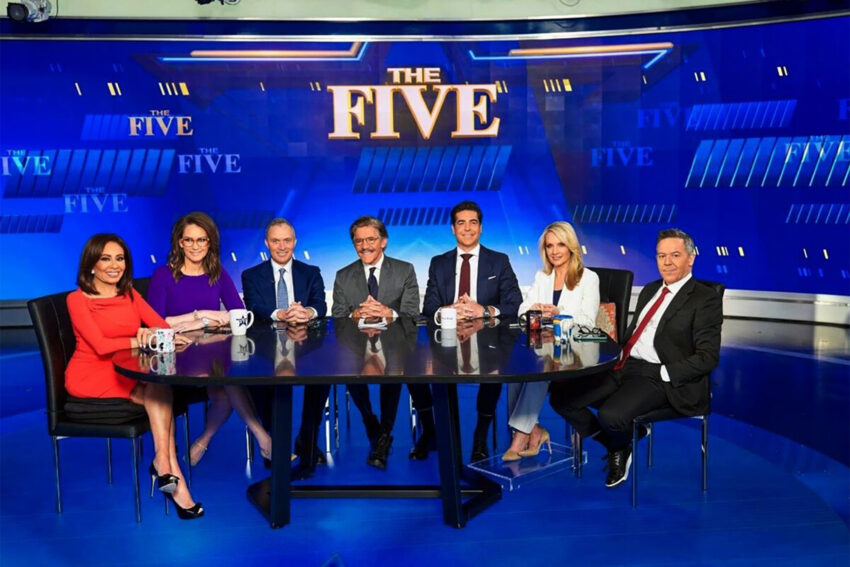
Rivera Quits Fox after ‘Firing’ From ‘The Five’
“Geraldo Rivera’s 22-year run at Fox News appears to be coming to an end,” Alex Weprin reported Thursday for the Hollywood Reporter.
“On Thursday afternoon, Rivera posted a video to his Twitter account filmed on a boat off the coast of Jones Beach in Long Island. In the video he told viewers, ‘I’ve been fired from The Five, and as a result of that I quit Fox.’
“He added that he would elaborate on that decision on Fox & Friends on Friday morning.
“Rivera said earlier this month that he was going to leave the 5 p.m. panel show, where he has been a regular panelist since last year. He had been expected to appear on Thursday’s episode.
“ ‘It’s been a great run and I appreciate having had the opportunity,’ Rivera wrote at the time. ‘Being odd man out isn’t always easy. For the time being, I’m still Correspondent at Large.’
“His video on Thursday suggests that his correspondent role is also coming to an end.
“A network spokesperson said in a statement to The Hollywood Reporter ‘We reached an amicable conclusion with Geraldo over the past few weeks and look forward to celebrating him tomorrow on Fox & Friends which will be his last appearance on the network.’ . . . ”
Rivera’s 80th birthday is July 4, is next week.
Wesley Lowery Joins American U. Faculty
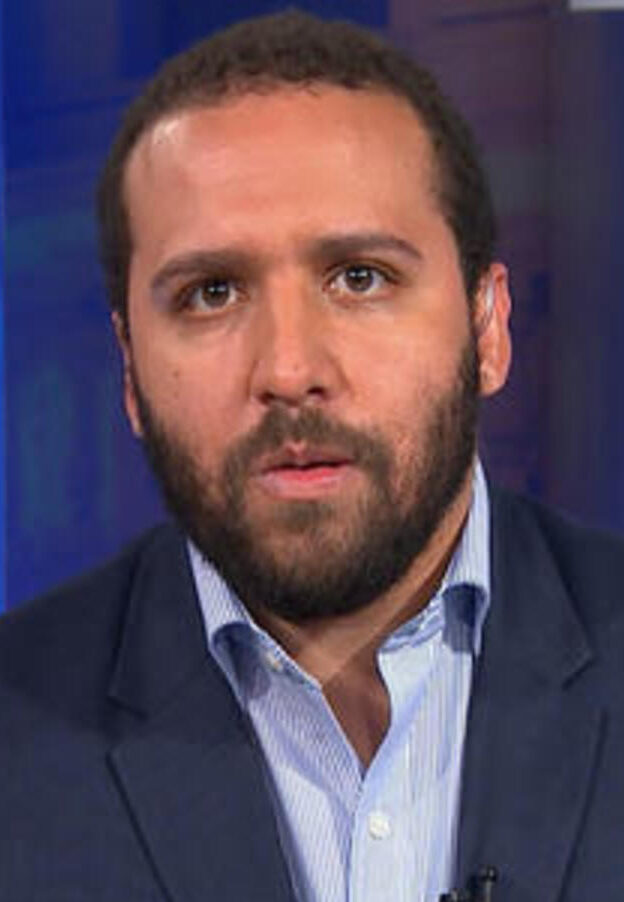 “Wesley Lowery (pictured), a Pulitzer Prize-winning reporter and best-selling author, widely regarded as one of the nation’s leading journalists covering issues of law enforcement, race and justice, has joined American University,” the university announced Monday.
“Wesley Lowery (pictured), a Pulitzer Prize-winning reporter and best-selling author, widely regarded as one of the nation’s leading journalists covering issues of law enforcement, race and justice, has joined American University,” the university announced Monday.
“Lowery, who starts July 1, will be an associate professor of investigative journalism, teaching courses in AU’s School of Communication, and executive editor at the Investigative Reporting Workshop, the nonprofit, editorially independent newsroom based in the school.
“ ‘Wesley Lowery is one of the most consequential journalism innovators and educators of our time. His work follows a long tradition of groundbreaking social justice journalism,’ said Leena Jayaswal, interim dean of AU SOC. ‘His investigations have reshaped practices in newsrooms across the nation and influenced national conversations on the Black Lives Matter movement, civil rights, and race relations. We’re delighted to welcome Professor Lowery to the School of Communication and the Investigative Reporting Workshop.’ ”
Lowery’s new book, “American Whitelash: A Changing Nation and the Cost of Progress,” was published Tuesday. It explores the rise of white supremacy in the wake of former president Barack Obama’s election and the subsequent election of Donald Trump.
‘Like a Minefield’: Being the Black U.S. Diplomat
June 28, 2023
Both State Department, Press Corps Lag on Diversity
(Homepage photo: “The American Diplomat,” PBS)
Journal-isms Roundtable photos by Sharon Farmer/sfphotoworks
Support Journal-ismsDonations are tax-deductible.
- New! Facebook fundraiser
At a June 15 House Foreign Affairs Committee hearing, Rep. Michael Waltz, R-Fla., questions State Department DEI chief Gina Abercrombie-Winstanley about the need to classify people by race. (Credit: Forbes/YouTube)
Both State Department, Press Corps Lag on Diversity
To some of us, the State Department is the place that issues U.S. passports, or that runs the American Embassy in some foreign country; that little piece of home where a U.S. citizen can seek refuge when in need.
The ambassador is the American who delivers bad news or good from the U.S. government to the host country, looks out for U.S. business interests, or is called in by the host nation’s leaders when they want to express displeasure with the United States.
The big news over the weekend was the aborted mutiny against Russian President Vladimir Putin, led by Russian mercenary leader Yevgeniy Prigozhin. It quickly became a matter as well for the State Department.
On Tuesday, the department noted those mercenaries’ murderous activities in Africa and imposed sanctions on elements in African countries doing business with Prigozhin’s operation, known as the Wagner Group.
It should be no surprise that there are racial overtones to the story; U.S. diplomats deal with a world that is majority people of color.
Reason enough for the State Department and the journalists who cover it to be diverse and to look like America, according to U.S. diplomats of color who joined our Journal-isms Roundtable Zoom on Sunday. In neither case has that been achieved.
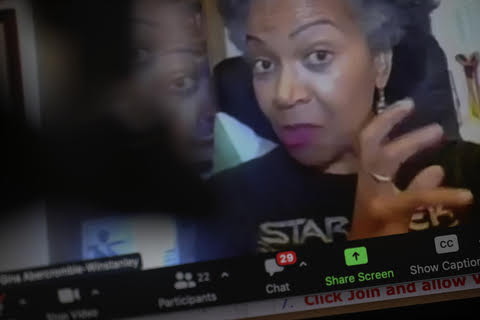 “Why would it be important for Black and Latino/Latina journalists to be covering the State Department?” Ambassador Gina Abercrombie-Winstanley (pictured), who is leaving her position as the State Department’s first chief diversity and inclusion officer Friday, repeated when asked the question.
“Why would it be important for Black and Latino/Latina journalists to be covering the State Department?” Ambassador Gina Abercrombie-Winstanley (pictured), who is leaving her position as the State Department’s first chief diversity and inclusion officer Friday, repeated when asked the question.
“Because you know we spend taxpayer money. When we fail at what we do, that means U.S. lives are being put on the line around the world.
“It means questions that should be asked probably aren’t being asked during the press briefings.
“I’ve listened to them over the years. I’ve often [been] astounded that journalists allow the . . . answers we provide, since we’re very good at not answering questions. . . .”
Retired ambassador Charles A. Ray, who has been posted to Cambodia and Zimbabwe, added, “You need to have the right questions asked. An example would be why, for example . . . has there been sort of this fuss about African countries being neutral on the whole Ukraine U.N. votes, but you hear nothing about the other countries in other parts of the world that were neutral, and, you know, why this difference in the response?”
Abercrombie-Winstanley, too, mentioned Ukraine. “We support Ukraine, and spend . . . much money, and send weapons and spend diplomatic capital in ensuring that we and our allies support Ukraine. And allowing Ukrainians to come into the United States on a status that’s very easy for refugees. And yet Ethiopia is in the midst of a conflict. Many places in Africa are in the midst of conflict, where there is a much higher loss of life.
“I listened to an NPR story where they had someone from Latin America go and look at the resources in place for Ukrainians coming over the border from Mexico and coming into the United States versus what they were getting as refugees, or people looking for protection in the United States, and not enough questions in my view are being asked that should ensure that the American people’s interest in the fullest sense of the word are being represented, are being reflected, are being respected.”
 Shaun Tandon (pictured) of Agence France-Presse is president of the State Department Correspondents’ Association. He acknowledges that, “The diversity level of the State Department press corps is definitely less than ideal. . . . Courtney McBride of Bloomberg News and Rosiland Jordan of Al-Jazeera English are both Black journalists and are on the State beat. Francesca Chambers of USA Today primarily covers the White House but has extended her coverage area to the State Department.
Shaun Tandon (pictured) of Agence France-Presse is president of the State Department Correspondents’ Association. He acknowledges that, “The diversity level of the State Department press corps is definitely less than ideal. . . . Courtney McBride of Bloomberg News and Rosiland Jordan of Al-Jazeera English are both Black journalists and are on the State beat. Francesca Chambers of USA Today primarily covers the White House but has extended her coverage area to the State Department.
“I am not aware of any Hispanic journalists covering State at present. We also have journalists of Asian heritage (myself included) covering the State Department. This is among the American journalists covering the State Department; there are also of course a number of foreign journalists of various backgrounds on the beat.
“We have around 40 journalists in the Correspondents’ Association. Membership is defined as all the journalists whose primary workspace is a desk in the correspondents’ room of the State Department; it is not a dues-paying or application-based organization.
“I would estimate around 20-30 additional journalists also regularly cover the State Department – often foreign journalists but also some American reporters who only cover State occasionally when there is news of interest to them.”
The Journal-isms Roundtable video is embedded above. (Credit: YouTube)
None of the 35 people on the Zoom call could recall any African American or Hispanic journalists assigned to the State Department. Another 36 were watching on Facebook and 70 others on YouTube as of 1:30 p.m. Wednesday.
In addition to Abercrombie-Winstanley and Ray, panelists were Aurelia Brazeal, a retired ambassador who served 41 years in the U.S. Foreign Service and was the first African American woman to be appointed ambassador by three presidential administrations; and history professor Michael L. Krenn of Appalachian State University. Krenn’s 1999 book, “Black Diplomacy: African Americans and the State Department, 1945-1969,” was the inspiration for “The American Diplomat,” a PBS documentary on African American ambassadors released last year. Krenn and Brazeal appear in the film.
We also toasted Claire Smith (pictured), winner of the 2023 Red Smith Award, a major sports journalism honor bestowed by the Associated Press Sports Editors, Nicole Avery Nichols, new editor of the Detroit Free Press and Yvette Walker (pictured, below), new vice president and editorial page editor at the Kansas City Star. Nichols and Walker are the first African Americans in their roles; and Smith is the first African American woman to win the Red Smith honor.
.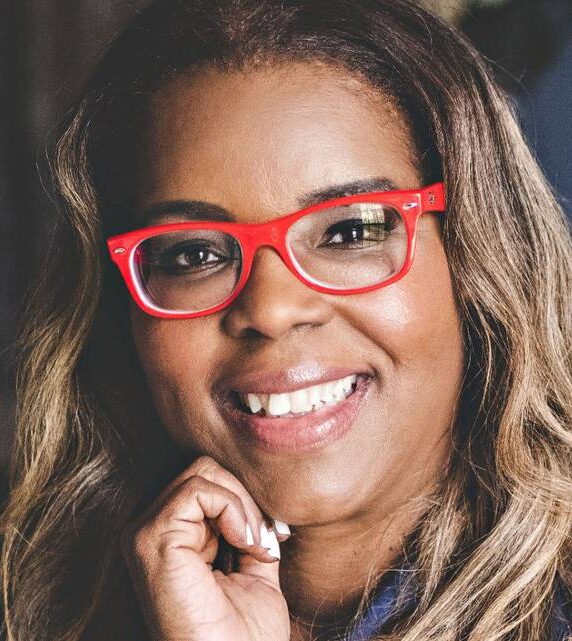 The “diplomatic guests were more open and honest than I expected!” Melvin Foote, founder and president of the nonprofit support group Constituency for Africa, exclaimed afterward.
The “diplomatic guests were more open and honest than I expected!” Melvin Foote, founder and president of the nonprofit support group Constituency for Africa, exclaimed afterward.
The candor was particularly true of Abercrombie-Winstanley, a career diplomat who said her departure was prompted by her need to spend more time with her husband. She used the occasion to summarize her tenure.
An appointee of Secretary of State Antony Blinken, she said she was known as a diversity advocate when Blinken assigned her to the job. ”He said we’re not hiding” the diversity problem, she recalled.
But the DEI chief said she was hampered by rules that said one could not “hire on the basis of a protected class” and by an exodus during the Trump years that reduced the pipeline.
Abercrombie-Winstanley left the department herself in 2017 — “and I say fired because [the] previous administration removed me at the last minute from the position I was about to take up and told me they didn’t want leadership for the office and made it clear that I could go sit in the library and do nothing and they were going to be fine with that.”
Add the presence of what the Harvard Business review has deemed “toxic rock stars,” defined by the review as ”a bully at work or a leader who delivers results but creates a toxic environment. These ‘toxic rock stars’ can ruin the workplace experience for most employees, but they’re particularly harmful to women of color,” the review continued.
“These individuals and the cultures that enable them are key factors driving women of color to leave their workplaces.”
The departing ambassador told us, “I’d say what has been left undone is accountability and . . . ensuring that we’re not sending out toxic rock stars.
“There will be many people who will be very glad to see me walk out the door on Friday because I have stayed on them. But I have also put in place other people who will stay on them.”
As the “American Experience” documentary showed, the issue of diversity in the State Department is one of long standing. While Frederick Douglass was appointed U.S. Minister Resident and Consul General in Haiti in 1889, it was not until Harry S. Truman’s presidency that African Americans were named ambassadors. The first was Edward R. Dudley in 1949.
“At the height of the civil rights movement in the United States, they were asked to represent the best of American ideals abroad while facing discrimination at home. Colloquially referred to as ‘pale, male, and Yale,’ the U.S. State Department fiercely maintained and cultivated the Foreign Service’s elitist character and was one of the last federal agencies to desegregate,” says a summary of the documentary.
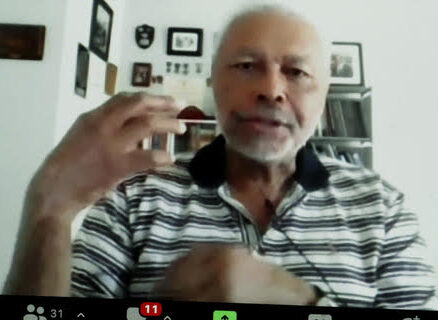 The panelists told the Zoom session that many of those issues remain. Responding to the question posed by the Roundtable title, “How U.S. Ambassadors of Color See the World,” Ray (pictured), an ambassador from 1982 to 2012, said, “It’s like a minefield. You have to step very carefully to keep from getting yourself blown up.” The Black ambassadors were called upon to represent a country whose racial problems could be hurled back at them as examples of American hypocrisy.
The panelists told the Zoom session that many of those issues remain. Responding to the question posed by the Roundtable title, “How U.S. Ambassadors of Color See the World,” Ray (pictured), an ambassador from 1982 to 2012, said, “It’s like a minefield. You have to step very carefully to keep from getting yourself blown up.” The Black ambassadors were called upon to represent a country whose racial problems could be hurled back at them as examples of American hypocrisy.
Ray said his response was to admit that the United States has such issues but was working on them, and at least has mechanisms to resolve them. The accusing country might try that approach, he would say.
Still, there are embarrassments.
“I remember once when I was stationed at the University of Houston,” Ray said. “I went to speak at a local university and I took a young diplomatic security guy from the local field office with me, young white guy. He and I walked into this professor’s office.
“This kid opened the door and held it for me. And I walked in and the professor walked to him first and stuck his hand out.
“And when he realized that the young white guy wasn’t the ambassador, it was the old Black guy with the gray hair, his face was redder than an apple. And you know, it’s that kind of unconscious, almost reflexive reaction, it still exists and people who say it doesn’t are either blind or stupid.”
Brazeal shared an incident from her ambassadorship in Micronesia.
“An American Caucasian citizen walked in the embassy. We all happened to be standing in the lobby talking to each other. It was a very small embassy.
“And he came in and he looked around and he said, ‘Nobody here looks American.’ And he turned around and walked out.
“And my entire staff sort of had their, you know, chin on the floor. Like, you know, what’s going on?
“So I said, ‘Well, look, if he comes back, we’ll have to help him. But before you help him, ask him for some ID.
“And if he asks why he has to show ID, you tell him because he doesn’t look like an American.
“So you can get your point across,” diplomatically, she concluded.
At the White House last week, Indian Prime Minister Narendra Modi is questioned by Wall Street Journal reporter Sabrina Siddiqui on human rights and democracy in India. (Credit: Hindustan Times/White House)
The Roundtable took place just three days after Indian Prime Minister Narendra Modi was questioned at a White House news conference about a crackdown on dissent and press freedom under Modi’s Hindu nationalist government. Wall Street Journal reporter Sabrina Siddiqui asked Modi what steps he was taking to protect Indian minorities and uphold free speech.
Modi, who has seldom faced the news media over his nine years as prime minister, said in response that “democracy is our spirit” and defended his government’s record. But since the news conference, Siddiqui has been subject to online attacks from officials from Modi’s Bharatiya Janata Party, including a party spokesman who called her a “bigot” on Twitter.
Meanwhile, Indian journalist Vivek Raghuvanshi, who has reported on defense matters for India’s Defense News for more than three decades, has been jailed since mid-May by India’s Central Bureau of Investigation on charges of espionage.
Asked how the diplomats handle issues of press freedom abroad, Abercrombie-Winstanley said, “The focus is on trying to get people out of jail, so it’s not always a full court public press. Since those things often don’t work anyway . . .”
Ray added that “domestic issues can complicate your ability overseas to do that. And I was thinking of recent, I guess legislation or executive orders in Florida that promised to penalize bloggers who write things that the governor doesn’t like. Quite often [those overseas] read the U.S. domestic news even better than we do.
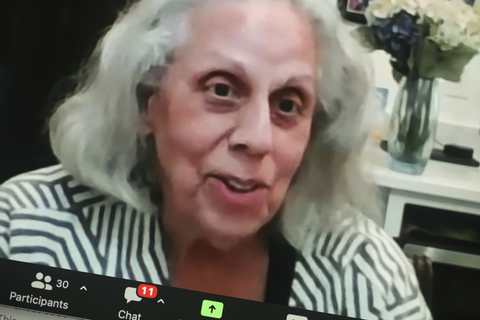 Brazeal (pictured) said she was “pretty depressed about the situation in my own country. . . . I see a movement away from freedom of the press . . . law and order principles of equality and justice and freedom. The right wing seems to be having a louder voice than in — as reported by the media — than voices against. I see us moving backwards, and in a sort of galloping way that makes me uncomfortable.”
Brazeal (pictured) said she was “pretty depressed about the situation in my own country. . . . I see a movement away from freedom of the press . . . law and order principles of equality and justice and freedom. The right wing seems to be having a louder voice than in — as reported by the media — than voices against. I see us moving backwards, and in a sort of galloping way that makes me uncomfortable.”
Responding to the toasts, sportswriter Smith praised the award’s namesake, Red Smith, and said, “This award will be dedicated to my sports editors past and present.”
Walker acknowledged that Kansas City has “a lot of news going on and, difficult news,” but said “I’ve got a really strong team that does not shy away from giving a point of view about news when it happens. . . . Opinion is doing very well for McClatchy, which is one reason why I was excited about this position.”
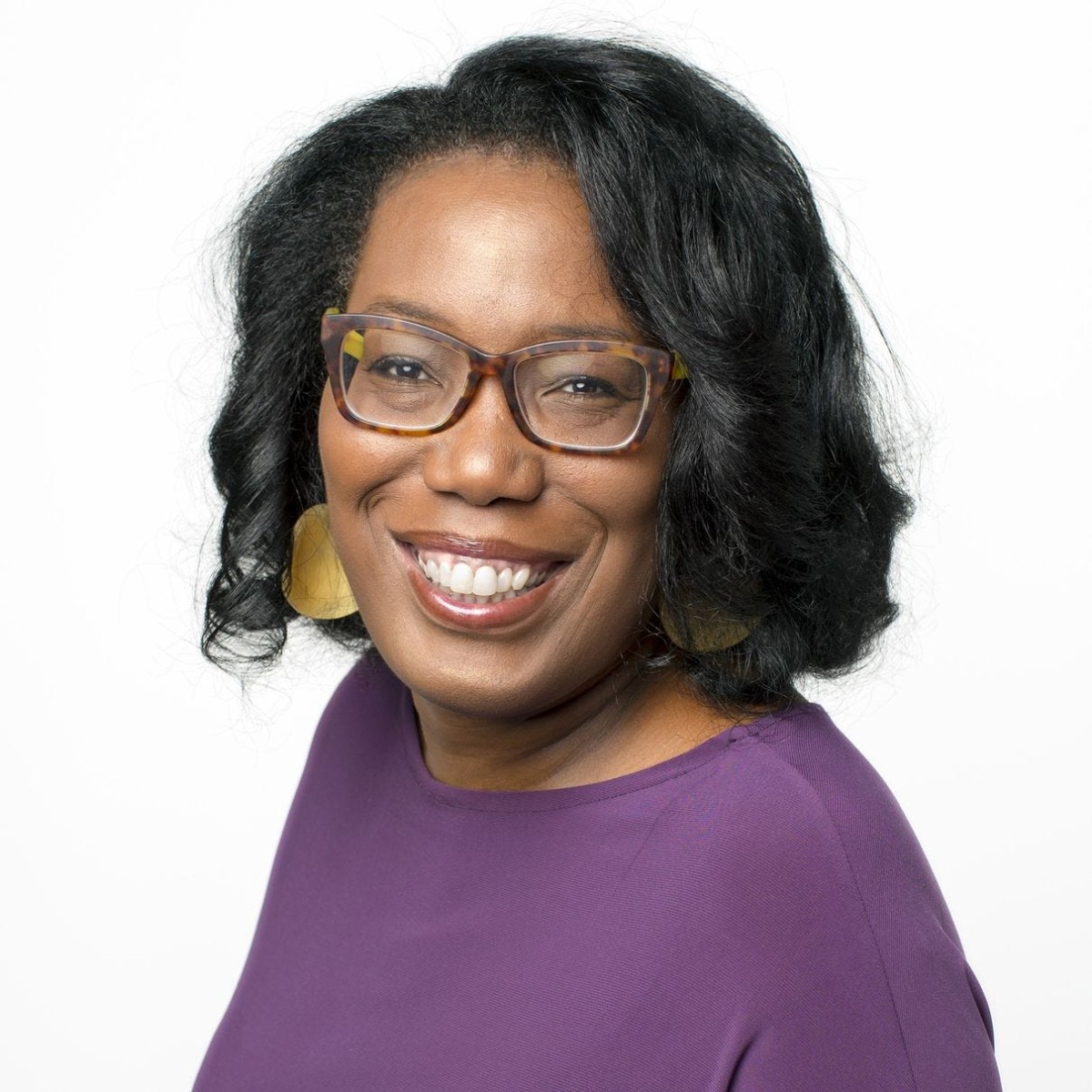 Nichols (pictured) said “the outpouring from the community, in Detroit as well as our journalism community has been just tremendous. And encouraging . . . laying the groundwork for the work that needs to be done in terms of really, really connecting with community.” Nichols said she hoped to reestablish “some of those connections that we’ve lost over the years because of all the things, the shrinking staff . . . the diversification of media. . . . “
Nichols (pictured) said “the outpouring from the community, in Detroit as well as our journalism community has been just tremendous. And encouraging . . . laying the groundwork for the work that needs to be done in terms of really, really connecting with community.” Nichols said she hoped to reestablish “some of those connections that we’ve lost over the years because of all the things, the shrinking staff . . . the diversification of media. . . . “
The Detroit community saw in her appointment “possibility. . . . I’ve been here since 1997 and community members and people have seen me silently continue to represent our community and others at the table quietly, right?” To “be named editor after all of those years of really toiling, you know — and some have been bumpy as you can imagine — I think it’s just — it was an exhale, in a really exciting moment not just for me in our newsroom but, you know, many folks.”
- Akbar Shahid Ahmed, HuffPost: With Big Promises Still Unfulfilled, State Department Diversity Chief Leaves Post (June 6)
- Association for Diplomatic Studies and Training: Being Black in a “Lily White” State Department (undated)
- Mary C. Curtis, Joanne Levine and Evan Campbell, “Equal Time with Mary C. Curtis” podcast, Roll Call: Breaking the ‘pale and male’ barrier (Dec. 3, 2020)
- Forbes: Ted Cruz To Top Biden DEI Chief: Your Policies Are ‘Nothing More Than Brazen Discrimination’ (July 26, 2022) (video)
- Diplomatic Security Service: The William D. Clarke, Sr. Diplomatic Security (Clarke DS) Fellowship
- Diplomatic Times: Trailblazing African American Diplomat Terence Todman Honored for Challenging Institutional Racism (Feb. 8, 2022)
- Richard A. Figueroa, American Foreign Service Association: State’s Problems Are Not New: A Look at the Record (October 2020)
- Alisha Haridasani Gupta, New York Times: Fulfilling a Promise: A Cabinet That ‘Looks Like America.’ (Jan. 21, 2021)
- National Museum of American Diplomacy: The Composure and Leadership of Ambassador Aurelia Brazeal (undated)
- Jalina Porter, Foreign Policy: The State Department’s Lack of Diversity Is Bad for U.S. Diplomacy (Feb. 28)
- State Department: Announcement of the Finalization of the State Department’s Five-year Diversity, Equity, Inclusion, and Accessibility (DEIA) Strategic Plan (Sept. 13, 2022)
- State Department: Secretary Blinken’s remarks at a cafeteria renaming ceremony for Black ambassador Terence A. Todman (Feb. 2, 2022) (video)
- State Department: Internships/Fellowships
- Washington Center for Internships and Academic Seminars: Foreign Affairs IT Fellowship
- YouTube: Dr. Ralph J. Bunche: “Negotiating for Peace at Home and Abroad” (Feb. 27, 2020) (video)
To subscribe at no cost, please send an email to journal-isms+subscribe@groups.io and say who you are.
Facebook users: “Like” “Richard Prince’s Journal-isms” on Facebook.
Follow Richard Prince on Twitter @princeeditor
Richard Prince’s Journal-isms originates from Washington. It began in print before most of us knew what the internet was, and it would like to be referred to as a “column.” Any views expressed in the column are those of the person or organization quoted and not those of any other entity. Send tips, comments and concerns to Richard Prince at journal-isms+owner@
View previous columns (after Feb. 13, 2016).
View previous columns (before Feb. 13, 2016)
- Diversity’s Greatest Hits, 2018 (Jan. 4, 2019)
- Book Notes: Is Taking a Knee Really All That? (Dec. 20, 2018)
- Book Notes: Challenging ’45’ and Proudly Telling the Story (Dec. 18, 2018)
- Book Notes: Get Down With the Legends! (Dec. 11, 2018)
- Journalist Richard Prince w/Joe Madison (Sirius XM, April 18, 2018) (podcast)
- Richard Prince (journalist) (Wikipedia entry)
- February 2018 Podcast: Richard “Dick” Prince on the need for newsroom diversity (Gabriel Greschler, Student Press Law Center, Feb. 26, 2018)
- Diversity’s Greatest Hits, 2017 — Where Will They Take Us in the Year Ahead?
- Book Notes: Best Sellers, Uncovered Treasures, Overlooked History (Dec. 19, 2017)
- An advocate for diversity in the media is still pressing for representation, (Courtland Milloy, Washington Post, Nov. 28, 2017)
- Morgan Global Journalism Review: Journal-isms Journeys On (Aug. 31, 2017)
- Diversity’s Greatest Hits, 2016
- Book Notes: 16 Writers Dish About ‘Chelle,’ the First Lady
- Book Notes: From Coretta to Barack, and in Search of the Godfather
- Journal-isms’ Richard Prince Wants Your Ideas (FishbowlDC, Feb. 26, 2016)
- “JOURNAL-ISMS” IS LATEST TO BEAR BRUNT OF INDUSTRY’S ECONOMIC WOES (Feb. 19, 2016)
- Richard Prince with Charlayne Hunter-Gault, “PBS NewsHour,” “What stagnant diversity means for America’s newsrooms” (Dec. 15, 2015)
- Book Notes: Journalists Follow Their Passions
- Book Notes: Journalists Who Rocked Their World
- Book Notes: Hands Up! Read This!
- Book Notes: New Cosby Bio Looks Like a Best-Seller
- Journo-diversity advocate turns attention to Ezra Klein project (Erik Wemple, Washington Post, March 5, 2014)

